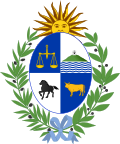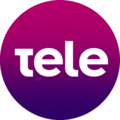This article has multiple issues. Please help improve it or discuss these issues on the talk page . (Learn how and when to remove these messages)
|
| This article is part of a series on the |
| Culture of Uruguay |
|---|
 |
| Uruguay Portal |
Analog television in Uruguay had a history of more than 50 years since it began in 1956, with the first television channel, Channel 10. Since then Uruguay has three other channels, Channel 12 Teledoce, Channel 4 Monte Carlo TV and Television Nacional Uruguay




